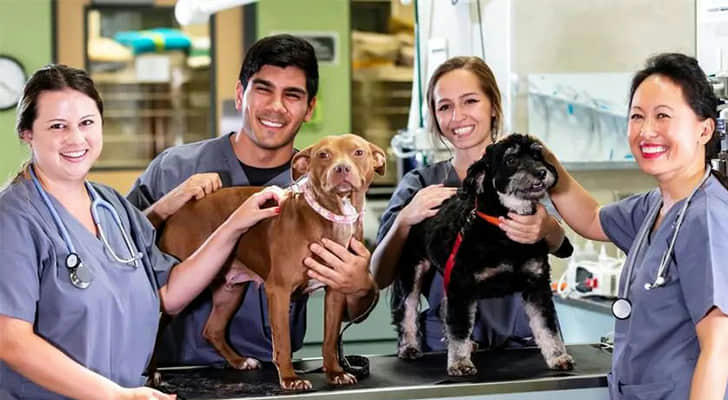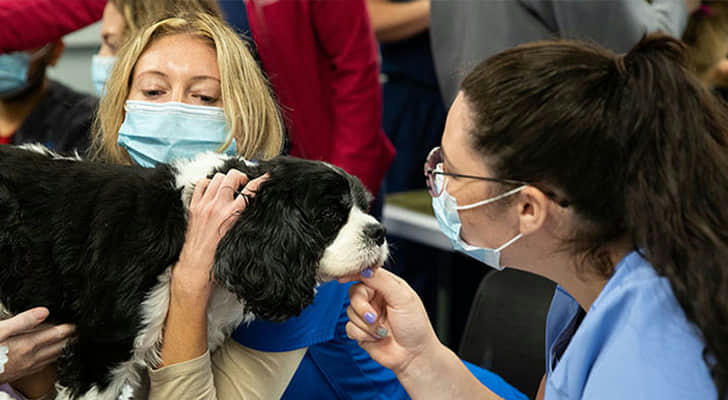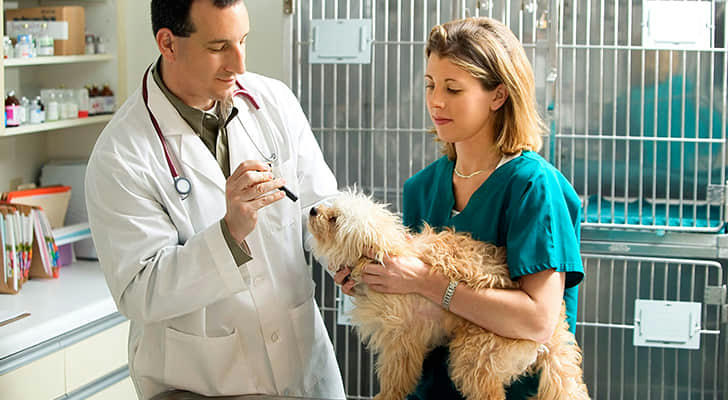How to Become a Certified Veterinary Technician: Your Step-by-Step Guide

If you have a passion for animals and are looking for a career that offers hands-on work and variety, becoming a certified veterinary technician could be a perfect fit. Veterinary technicians play a crucial role in animal healthcare, engaging in a wide range of tasks and working with different types of animals.
What Is a Veterinary Technician?
A veterinary technician is a trained professional who supports veterinarians in providing medical care to animals. While they play an essential role in animal health, veterinary technicians are not permitted to diagnose conditions, prescribe medications, or perform surgeries independently.
Daily Responsibilities of a Veterinary Technician

As a veterinary technician, your typical workday may involve several key tasks:
•Interacting with Pet Owners: During veterinary appointments, you'll gather detailed information about the pet's health history. Building a good rapport with both the pet and its owner is important. You will also assist in stabilizing the pet for the veterinarian’s examination.
•Handling Medical Data: You will be responsible for reviewing X-rays, conducting lab tests, collecting blood samples, and analyzing urine. This data is essential for diagnosing health issues and planning appropriate treatments.
•Assisting in Surgeries: In surgical settings, you play a critical role by preparing IV fluids, setting up the surgical area, and sterilizing instruments. During surgery, you monitor the pet’s vital signs to ensure they remain stable.
Work Environments for Veterinary Technicians
Veterinary technicians can work in a variety of settings beyond traditional veterinary offices. Opportunities include working in laboratories, private industry, zoos, wildlife sanctuaries, livestock farms, and even the military. Vet techs can specialize in different areas, such as pet care, farm animal care, or exotic animal care.
Steps to Becoming a Veterinary Technician

If you're considering a career as a veterinary technician, here’s a step-by-step guide to help you navigate the path to becoming a certified professional.
1. Research Your State’s Licensing Requirements
Licensing requirements for veterinary technicians vary by state. Before enrolling in a training program, consult your state’s licensing board to understand the specific prerequisites and regulations. Most states require a high school diploma or equivalent as a basic qualification for entering a vet tech program.
2. Enroll in an Accredited Veterinary Technology Program
Select a veterinary technician training program that is accredited by the American Veterinary Medical Association (AVMA). These programs typically offer a two-year associate degree in veterinary technology, though some institutions provide a four-year bachelor’s degree option. Accreditation ensures that the program meets the educational standards necessary for a successful career.
3. Complete Clinical Training Hours
State requirements for clinical training hours differ, so verify that your chosen program meets these requirements. Accredited vet tech programs often include practical experience through preceptorships, practicums, or externships, which provide hands-on training in real-world settings.
4. Pass the Veterinary Technician National Examination (VTNE)
To achieve certification, you will need to pass the Veterinary Technician National Examination (VTNE). This comprehensive, three-hour computer-based test consists of 170 multiple-choice questions covering various topics, including:
Critical care and emergency medicine
Diagnostic imaging
Pain management
Animal care
Anesthesia
Laboratory procedures
Dentistry
Surgical nursing
Pharmacology
Communication and support services
Successfully passing the VTNE is essential for obtaining certification and advancing your career as a veterinary technician.
Veterinary Technician Earnings and Job Prospects

As reported by the U.S. Bureau of Labor Statistics (BLS), veterinary technicians earned a median annual salary of $38,240 in 2022. The states offering the highest average salaries for veterinary technicians include Washington, California, and New York.
The BLS anticipates a significant job growth of 21% for veterinary technicians between 2022 and 2032, which is substantially higher than the average job growth rate across all professions. Approximately 90% of veterinary technicians are employed in veterinary clinics and hospitals.
Specializations for Veterinary Technicians
Veterinary technicians have the opportunity to specialize in various fields, including:
•Dental Technology: Focusing on oral health and dental care for animals.
•Anesthesia: Administering and monitoring anesthesia during procedures.
•Emergency and Critical Care: Providing urgent care and managing critical cases.
•Internal Medicine: Diagnosing and treating internal health issues.
•Behavioral Medicine: Addressing and managing animal behavior problems.
•Zoological Medicine: Caring for exotic and zoo animals.
•Equine Nursing: Specializing in the care of horses.
Specializations can be pursued either during your initial education or through additional on-the-job training.
Veterinary Technician Certifications
The titles and requirements for veterinary technician certifications vary by state. Common designations include:
Licensed Veterinary Technician (LVT)
Licensed Veterinary Medical Technician (LVMT)
Certified Veterinary Technician (CVT)
Registered Veterinary Technician (RVT)
To obtain certification in most states, you must complete an AVMA-accredited veterinary technician program, pass the Veterinary Technician National Examination (VTNE), and meet any additional state-specific requirements.
Common Questions About Becoming a Certified Veterinary Technician
•What are the primary responsibilities of a veterinary technician?
Veterinary technicians assist veterinarians in providing care for animals. Their typical tasks include observing animal health, offering emergency treatment, ensuring cleanliness, helping with medical exams, administering medications, taking X-rays, and documenting medical histories.
•How do certified and registered veterinary technicians differ?
The terms "certified" and "registered" veterinary technicians refer to the same role but are used differently depending on the state. Certification requirements, including passing the VTNE, are generally similar, but each state has its own preferred terminology.
•What distinguishes a CVT from an LVT?
The titles "Certified Veterinary Technician (CVT)" and "Licensed Veterinary Technician (LVT)" vary by state but represent equivalent qualifications and responsibilities. To obtain either title, you must complete an accredited training program and pass the VTNE.
•Is there a difference in qualifications between a veterinary technician and a veterinary assistant?
Veterinary technicians typically undergo more extensive education and training compared to veterinary assistants. Consequently, vet techs handle more complex tasks and receive higher salaries. Vet techs complete a formal training program, pass the VTNE, and meet state-specific training requirements, while vet assistants usually start with just a high school diploma or GED®.
•What benefits come with being a certified veterinary technician?
Certification as a veterinary technician is often required by most states and can enhance your job prospects. It provides extensive hands-on experience, preparing you better for the role. Certified vet techs also generally earn higher wages compared to non-certified roles like veterinary assistants.
•Can you take the VTNE without formal education?
Only a few states, including Alaska, California, and Wisconsin, allow individuals to take the VTNE and gain certification without completing a formal veterinary technician program. In other states, attending an accredited program is necessary.
